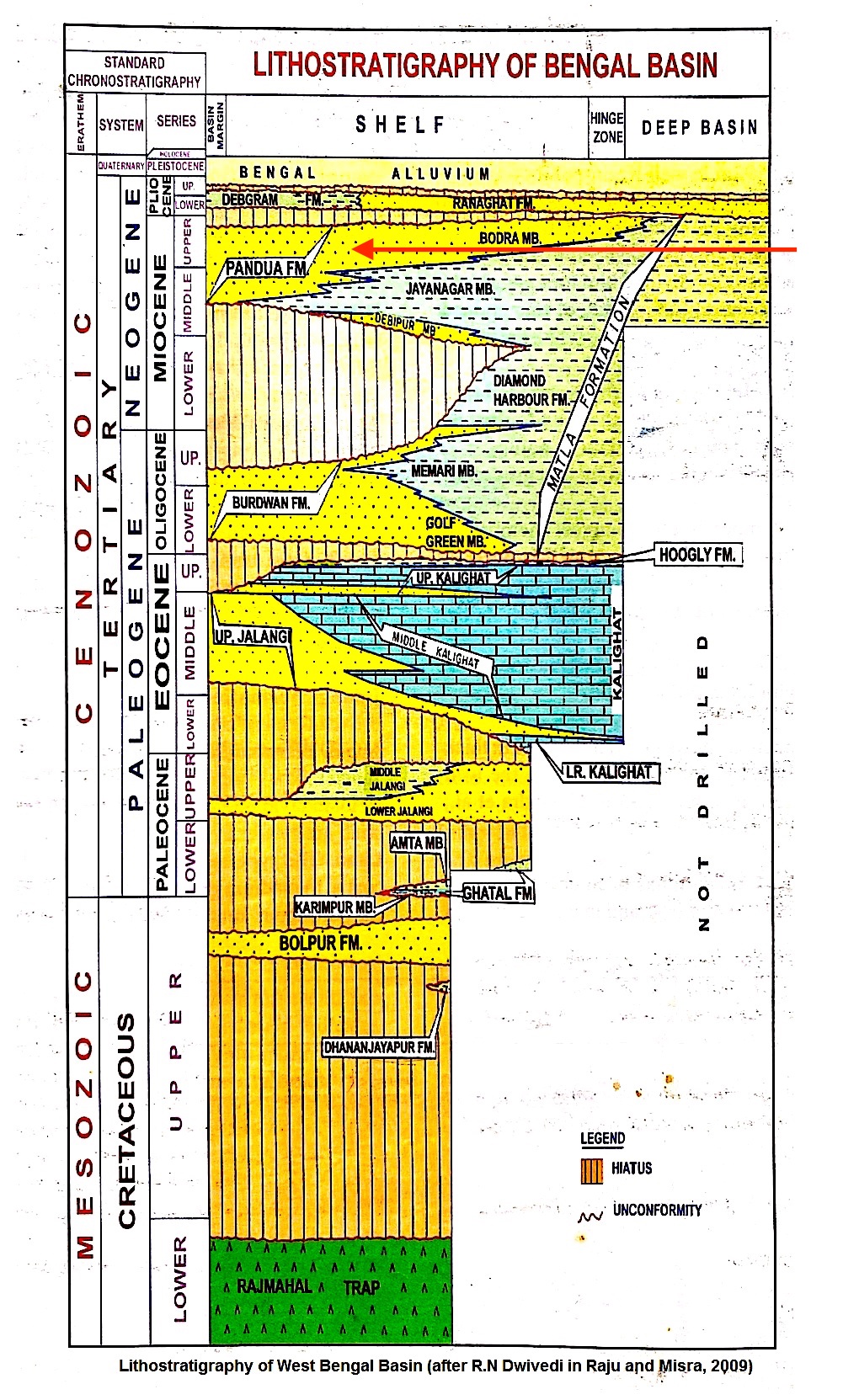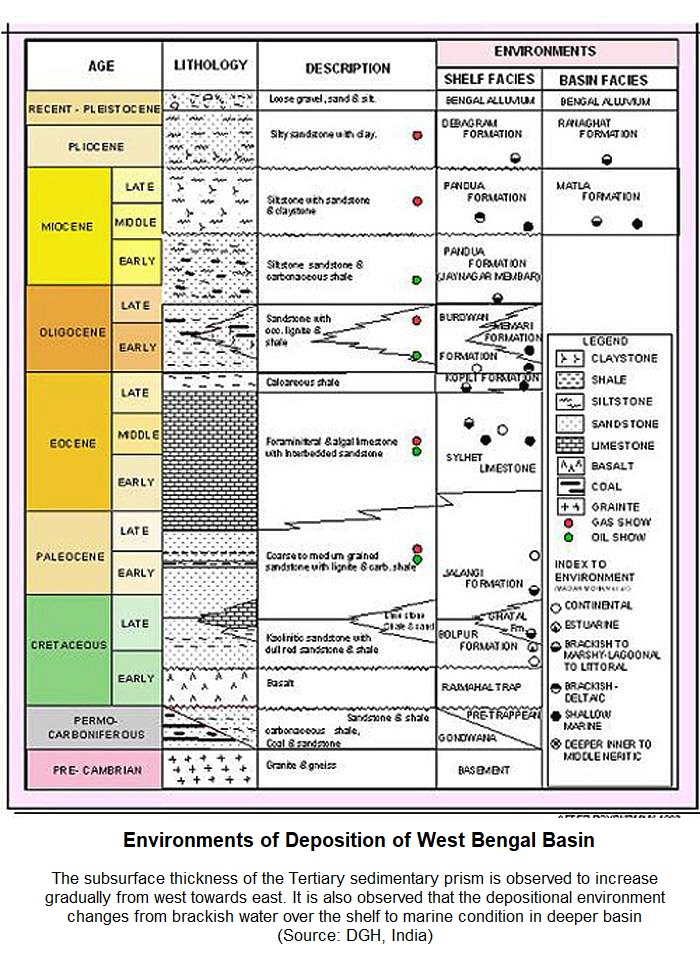Pandua Fm
Type Locality and Naming
Type section is in the well Memari - 1, Interval is 1746-2414 m and thickness is 668 m. [Original Publication: Biswas, B. (1963) Results of exploration for Petroleum in the Western part of Bengal Basin, India. Proc. 2nd Symp. Dev. Petrol Res. ECAFE Mins. Res. DeVol. Ser No. 18, pt 1, pp. 241-250.]
[Figure 1: Location map showing tectonic elements and drilled wells (after R.N Dwivedi in Raju and Misra, 2009)]
Lithology and Thickness
Claystone and fine-grained sandstone. In type section, the formation comprises of slightly calcareous shale and fine-grained sandstones in the lower part and clay shales with minor siltstones and sandstones in the upper part. The Pandua Formation shows increase in thickness towards east in the western most well Galsi-3, it is of the order of 150 m. and in the eastern most well Bodra-2, around 800 m.
MEMBER(S) – The Pandua Formation is divided into three members – Debipur, Jaynagar and Bodra. The lower Debipur Member, and the upper Bodra Member are mainly sandy in composition while the middle or Jayanagar Member is essentially argillaceous.
[Figure 1: West Bengal Basin lithostratigraphy (after R.N. Dwivedi in Raju and Misra, 2009) with red-arrow showing position of this formation]
Relationships and Distribution
Lower contact
Lower boundary is unconformable with the Burdwan Fm and Diamond Harbour Fm. In NW Bangladesh, it is transitional to Memari Fm (late Olig) or to Burdwan Fm (Olig), depending on usage
Upper contact
Upper boundary is unconformable with the overlying Debagram Fm or Ranaghat Fm. In NW Bangladesh, it is overlain by Debagram Fm on USGS-PetroBangla 2001 chart; but this is not mentioned on Banglapieda geology website.
Regional extent
It is mostly present in the Baidyapur Depression, Radha Monocline and part of Contal Monocline. The formation progrades towards south-east in the deep basin and is represented in Bodra-Port Canning area. Present on NW Bangladesh on Precambrian platform region. Implied to be coeval with the thick Surma Gr deposits in SE Bangladesh geosynclinal basin (Bhuban Fm then Bokabil Fm)
GeoJSON
Fossils
The most commonly and frequently occurring forms in the Pandua Formation are Ammonia beccarii, Bulimina, Bolivina, Cibicides, Nonion and different species of Globogerina, Globorotalia, Globigerinoides, Globoquadrina.
Age
Depositional setting
The Pandua Formation represents a complete transgressive - regressive cycle. The sequence starts with Middle Miocene transgressive phase when Debipur Member was deposited. The sandy Bodra Member represents regressive deltaic phase. The Jaynagar Member comprises marine shales between the two events reaching as deep as middle shelf. Partly alluvial-fluvial from erosion of rising Himalayas.
[Figure: Environments of Deposition of West Bengal Basin (from dghindia.gov.in)]
Additional Information


